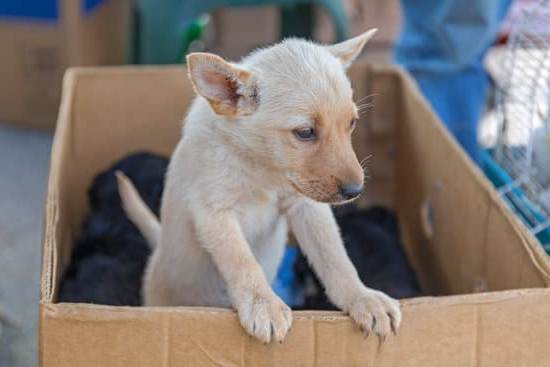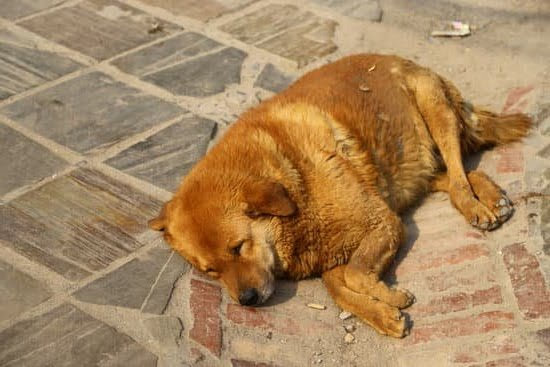Potty training is an essential aspect of raising a well-behaved and disciplined dog. Understanding how old to start potty training your furry friend is crucial in ensuring a smooth and successful process. By establishing good habits early on, you can set your dog up for a lifetime of cleanliness and obedience.
Dogs, like humans, thrive on routine and structure. Potty training not only helps in maintaining a clean living environment but also strengthens the bond between you and your pet. Starting the training at the right age will make the process easier for both you and your dog, resulting in a happier and healthier relationship overall.
In this article, we will delve into the importance of potty training for dogs, discuss the signs that indicate your dog is ready for training, explore the steps to effectively potty train your canine companion, address common mistakes to avoid during the process, provide tips on maintaining consistency and positive reinforcement, as well as offer guidance on overcoming setbacks and celebrating milestones along the way. Let’s embark on this journey towards successful potty training together.
Choosing the Right Age to Start Potty Training Your Dog
Potty training is an essential aspect of raising a well-behaved and healthy dog. One of the key factors in successful potty training is choosing the right age to start the process. While every dog is different, experts generally recommend starting potty training when the puppy is between 12 and 16 weeks old. At this age, puppies have enough control over their bodily functions to learn where and when it is appropriate to relieve themselves.
Before starting the potty training process, it is important to observe your dog’s behavior and look for signs that they are ready. Some common signs that indicate your dog is ready for potty training include sniffing around, circling, or squatting as if they are about to urinate or defecate.
Additionally, if your dog begins whining or pacing around restlessly, they may need to go outside to eliminate. Being attentive to these cues can help you establish a successful potty training routine.
One important aspect of choosing the right age for potty training your dog is considering their physical development. Younger puppies have less control over their bladder and bowel movements, so starting too early may result in accidents and frustration for both you and your furry friend.
On the other hand, waiting too long to begin potty training can also lead to ingrained bad habits that are harder to correct later on in life. It’s crucial to find the right balance and take into account your dog’s individual needs and development stage before embarking on the potty training journey.
| Age Range | Recommended Activities |
|---|---|
| 8-12 weeks old | Begin basic obedience training |
| 12-16 weeks old | Start potty training process |
Signs That Your Dog Is Ready for Potty Training
When it comes to potty training your dog, recognizing the signs that your furry companion is ready to begin this essential training process is crucial. Determining the right time to start potty training can make a significant difference in how quickly and successfully your dog learns. So, how do you know when your dog is ready for potty training?
One of the key indicators that your dog is prepared for potty training is age. While there isn’t a one-size-fits-all answer to how old a dog should be to start potty training, most experts agree that puppies can begin learning as early as 12 weeks of age. However, it’s important to keep in mind that every dog is different, and some may show readiness sooner or later than others.
Another sign that your dog may be ready for potty training is their behavior around elimination. If you notice that your dog has developed a sense of routine when it comes to going potty, such as heading to the same spot in the yard or whining at the door, this can indicate readiness for training.
Additionally, if your dog tends to sniff around or circle before eliminating, they may be displaying signs of understanding where and when they should go potty.
For some dogs, displaying signs of seeking privacy when eliminating can also be an indication that they are ready for potty training. This behavior shows that your dog understands the need for a specific place and time to go potty, making it easier to transition into a structured potty training routine. By observing these behaviors and cues from your furry friend, you can determine if they are prepared to start their journey towards successful potty training.
| Key Indicator | Description |
|---|---|
| Age | Dogs can start learning at 12 weeks but varies per individual |
| Behavior around elimination | Routine patterns like circling before going out signals readiness |
| Seeking Privacy | Dogs looking for private spots may understand need for designated area |
Steps to Successfully Potty Train Your Dog
Potty training your dog is an essential part of ensuring a happy and harmonious relationship between you and your furry companion. By following the right steps, you can effectively teach your dog where it is appropriate to relieve themselves, leading to a cleaner home environment and less stress for both you and your pet.
Establish a Routine
Consistency is key when it comes to potty training your dog. Establishing a regular routine for feeding, playtime, and bathroom breaks will help your dog understand when they should go outside to eliminate. Take your dog out first thing in the morning, after meals, before bedtime, and at regular intervals throughout the day. Praise and reward them when they go potty outside to reinforce this behavior.
Use Positive Reinforcement
Positive reinforcement is a powerful tool when it comes to potty training your dog. When your dog eliminates in the appropriate spot outside, immediately reward them with treats, praise, or playtime. This positive association will help them understand that going potty outside is what you expect from them. Avoid using punishment or scolding if accidents happen indoors as this can create fear and anxiety in your pet.
Monitor Your Dog’s Behavior
Keep a close eye on your dog’s behavior to anticipate when they may need to go potty. Signs such as sniffing around, circling, whining, or suddenly disappearing may indicate that your dog needs to relieve themselves. If you notice these behaviors, quickly take them outside to their designated toilet area. By being observant and proactive in guiding your dog’s bathroom habits, you can accelerate the potty training process effectively.
Common Mistakes to Avoid During the Potty Training Process
Potty training a dog is a crucial aspect of pet ownership that requires patience, consistency, and understanding. While it may seem like a daunting task, avoiding common mistakes can make the process smoother and more successful. By recognizing these pitfalls, dog owners can ensure that their furry friends learn proper bathroom etiquette effectively.
Not Establishing a Routine
One of the most significant mistakes dog owners make during the potty training process is failing to establish a consistent routine. Dogs thrive on predictability and structure, so setting specific times for bathroom breaks can help them understand when and where they should do their business. Without a schedule in place, dogs may become confused about where they are supposed to go potty, leading to accidents inside the house.
Using Punishment Instead of Positive Reinforcement
Another common mistake during potty training is using punishment as a method of correction. It’s essential to remember that dogs respond best to positive reinforcement rather than negative consequences. Yelling at or scolding your dog for accidents can create fear and anxiety, making them less likely to understand the desired behavior. Instead, praise and reward your dog when they eliminate in the appropriate spot to encourage repeat performance.
Inconsistency in Training Methods
Consistency is key when it comes to potty training your dog successfully. Switching up training methods or allowing exceptions to the rules can be confusing for your pet. It’s crucial to stick with one approach throughout the entire training process to avoid mixed signals. Whether you’re using crate training, paper training, or outdoor elimination, consistency will help reinforce good habits and set clear expectations for your furry companion.
By being mindful of these common mistakes during the potty training process, dog owners can set their pets up for success as they learn proper bathroom etiquette. Through routine, positive reinforcement, and consistency in training methods, dogs can quickly grasp where they should go potty and build healthy habits for the future. Remember that every dog is unique, so patience and understanding are key components in achieving successful potty training results with your canine companion.
Tips for Maintaining Consistency and Positive Reinforcement
Potty training a dog is a crucial aspect of their overall obedience and well-being. Consistency and positive reinforcement play a significant role in ensuring successful potty training. Without these key elements, the process can be frustrating for both the owner and the dog. Here are some tips to help you maintain consistency and utilize positive reinforcement effectively:
- Establish a routine: Dogs thrive on routine, so it’s essential to create a consistent schedule for feeding, bathroom breaks, and playtime. This predictability will help your dog understand when it’s time to go outside to eliminate.
- Use positive reinforcement: Rewarding your dog with treats, praise, or playtime whenever they exhibit good potty behavior can go a long way in reinforcing the desired actions. Positive reinforcement helps your dog associate going potty in the right place with pleasant outcomes.
- Be patient and stay calm: Potty training can be challenging at times, but it’s crucial to remain patient and composed throughout the process. Yelling or punishment can have negative effects on your dog’s progress and may lead to setbacks.
Consistency is key when it comes to potty training your dog. It’s essential to stick to the established routine and reward good behavior consistently. Remember that every dog is different, so what works for one may not work for another. By staying patient, using positive reinforcement, and maintaining a structured approach, you can effectively potty train your furry companion.
- Monitor food and water intake: Keeping track of when your dog eats and drinks can help you anticipate when they’ll need to go outside. Limiting access to food or water close to bedtime can also reduce accidents during the night.
- Supervise closely: Especially in the early stages of potty training, closely supervising your dog indoors can help prevent accidents. Keep an eye on their body language – sniffing around or circling may indicate they need to go outside.
- Clean up accidents properly: Accidents are bound to happen during the potty training process. When they do occur, make sure to clean up using an enzymatic cleaner to remove any residual odors that might attract your dog back to the same spot.
Dealing With Setbacks and Challenges During Potty Training
Potty training your dog can be a challenging process, and setbacks are bound to happen along the way. It’s important to be prepared for these challenges and know how to handle them effectively. Here are some tips on dealing with setbacks during your dog’s potty training journey:
- Stay patient and consistent: Remember that potty training takes time and every dog learns at their own pace. Stay patient even when accidents happen and continue to be consistent with your training methods.
- Reevaluate your strategy: If you’re consistently facing setbacks in your dog’s potty training, it may be time to reevaluate your approach. Consider if there are any changes you can make to your routine or training methods that could help improve the situation.
- Address any underlying issues: Sometimes setbacks in potty training can be a sign of underlying health issues or behavioral problems. If you notice a sudden change in your dog’s potty habits, it’s important to consult with a veterinarian or professional trainer to rule out any potential issues.
Remember that setbacks are a normal part of the potty training process, and overcoming them will ultimately strengthen the bond between you and your furry friend. By staying patient, consistent, and addressing any challenges head-on, you’ll be able to help your dog successfully master the art of potty training.
- Acknowledge progress: Celebrate even the smallest victories during your dog’s potty training journey. Whether it’s successfully going outside to do their business or showing improvement in holding it in, recognizing and praising your dog for their efforts will help motivate them to continue learning.
- Seek support: Don’t hesitate to reach out for support from fellow pet owners or professionals if you’re feeling overwhelmed by the challenges of potty training. Sometimes just talking through your struggles with someone who understands can provide valuable insight and encouragement.
- Stay positive: Maintaining a positive attitude throughout the potty training process is key to helping your dog feel confident and motivated. Avoid getting frustrated or scolding your pet for accidents – instead, focus on providing gentle guidance and reinforcement for good behavior.
By following these tips and staying committed to helping your dog succeed, you’ll eventually see progress in their potty training skills. Remember that every setback is an opportunity for growth and learning, both for you as a pet owner and for your beloved canine companion.
Celebrating Milestones and Progress in Your Dog’s Potty Training Journey
Potty training your dog is a process that requires patience, consistency, and positive reinforcement. As you go through this journey with your furry friend, it’s important to celebrate the milestones and progress they make along the way. Celebrating these achievements not only boosts your dog’s confidence but also strengthens the bond between you and your pet.
One of the first milestones to celebrate in your dog’s potty training journey is when they consistently start going potty in the designated area. This shows that they are starting to understand where they should be doing their business. When this happens, make sure to praise and reward them with treats or extra love and affection. Positive reinforcement is key in reinforcing good behavior and encouraging them to continue following the right potty habits.
Another milestone to celebrate is when your dog starts giving you cues or signals that they need to go potty. This could be anything from pacing around, sniffing the ground, or even going towards the door. By recognizing these signs, you can help prevent accidents from happening inside your home. When your dog successfully communicates their needs to you, it’s a big step forward in their potty training progress.
Lastly, celebrating small victories along the way, such as having fewer accidents or extending the time between potty breaks, is crucial in keeping up the momentum of your dog’s potty training journey. Remember that every dog learns at their own pace, so it’s essential to acknowledge and appreciate their efforts no matter how small they may seem.
By acknowledging these accomplishments, you are not only tracking their progress but also motivating them to continue on the path towards successful potty training.
Conclusion
Potty training your dog at the right age is crucial for both the pet and the owner. It not only helps maintain a clean and hygienic living environment but also strengthens the bond between the two. Understanding when to start potty training your furry friend is the first step in ensuring a successful training process. By recognizing the signs that indicate your dog is ready for potty training, you can set them up for success from the beginning.
Choosing the appropriate age to begin potty training your dog is essential in preventing any confusion or setbacks during the process. Starting too early may overwhelm your pet, while starting too late can lead to ingrained habits that are harder to break.
With patience, consistency, and positive reinforcement, you can effectively teach your dog where and when to go potty. By avoiding common mistakes and staying committed to the training routine, you can help your dog learn this important skill in no time.
Remember that setbacks and challenges are a normal part of the potty training journey. Stay patient and understanding during these times, as they offer valuable learning opportunities for both you and your dog.
Celebrating milestones and progress, no matter how small, will keep you motivated throughout the process. In conclusion, by potty training your dog at the right age and following these tips, you are not only creating a happier and healthier living environment but also strengthening the lifelong bond with your canine companion.
Frequently Asked Questions
Can an 8 Week Old Puppy Be Potty Trained?
Potty training an 8-week-old puppy is definitely possible, but it requires patience and consistency. At that age, they have smaller bladders and may need more frequent bathroom breaks to avoid accidents.
What Age Should a Dog Be Fully Potty Trained?
Dogs are typically fully potty trained between 4 to 6 months of age. However, some breeds may take longer than others to grasp the concept. It’s important to continue reinforcing good habits even after they seem fully trained.
Should a 1 Year Old Dog Be Potty Trained?
By the time a dog reaches 1 year old, they should definitely be potty trained. If not, it may indicate a lack of consistency or underlying health issues that need to be addressed. It’s crucial to continue training and reinforcement as needed.

Welcome to the blog! I am a professional dog trainer and have been working with dogs for many years. In this blog, I will be discussing various topics related to dog training, including tips, tricks, and advice. I hope you find this information helpful and informative. Thanks for reading!





